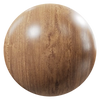There are many sectors that use parts or products that require extremely small machining and more and more applications will be affected in the future. Let's see some examples of applications:
Automotive micromachining
The automotive industry is a driving sector for research and also micromachining is used in various application areas. One of the most consolidated applications is that relating to the creation of holes for fuel injectors, but also for the creation of filters for diesel and petrol or for the creation of smart sensors increasingly present in our vehicles. Sports cars or emerging electric cars have brought out the need to use resistant and ultralight but difficult to work composite fibers. Ultra Fast Lasers have solved the problems related to cutting, drilling or surface processing.
Medicale micromachining
The medical sector and biotechnologies are one of the most frequent applications for laser micromachining, in particular for components relating to Microfluidics (micro-filters, micro-pumps, catheters, etc.). In addition, they are used to create:
dispenser for medicines and nebulizers, stents and transdermal patches.
Electronics micromachining
Electronics is certainly the sector that makes the most use of laser micromachining machines, in particular for the production of PCBs with micro cuts and micro holes (vias), creating screen printing foils (Solder mask Stencil), for the production of displays, for trimming electronic components, for the realization and structuring of MEMS or for the realization of RFID circuits of ever smaller dimensions.
Molds
In the mold sector, laser micromachining machines are used for surface texturing. Often sectors such as automotive and consumer electronics require special surface textures to simulate the effect of the skin or to give particular sensations to the touch. These fabrications are carried out by creating molds with particular surface processing, often in 3D, which require very precise lasers.
Aerospace
Aerospace is an extreme sector for materials and technology and here too laser micromachining plays a role. Surface processing of aeronautical turbines and vanes, processing of composite materials, processing for space antennas (thin film) are just some examples of their use.
Photovoltaic & Semiconductors
In the production of semiconductor components, laser micromachining is used for the operations of silicon disks for the separation and surface structuring of the chips (dicing, scribing).
Watches
The production of watches is one of the sectors that historically have always needed micro-components. The microstructuring of gears and small parts for watches is the stuff of Laser Micromachining. In addition, micro-engravings and the aesthetic surface finishes of the cases are also other widespread applications
Biotech
This new sector has an increasing need to use laser micromachining especially for the processing of particular glasses and special laboratory filters or for the innovative implantable and non-implantable Lab on chips that are able to monitor human functions with ultra-small technologies.
Energy
Energy and the challenge to renewable resources is one of the hottest topics of our period. Laser micromachining is also used in this important sector, for the production of solar panels (thin film patterning, cleaning of conductors and panel edges).
A rapidly expanding sector is that of Lithium-ion batteries. Processes such as the cutting of electrodes and insulation, micro welding or surface processing are performed with laser micro-processing machines.
The production of low energy consumption LEDs is another popular application for scribing, dicing and laser marking.









![]()

![]()

![]()

![]()

![]()

![]()

![]()

![]()

![]()

![]()

![]()

![]()











